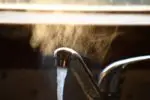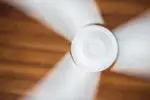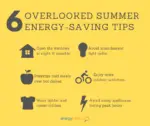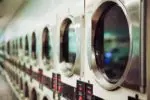
The hot weather is around the corner again. It’s time to pack your winter coat and prepare your home for spring and summer. As the cold temperatures start to say goodbye, your energy consumption also begins to change, which requires new energy efficiency methods at your place. But there’s no reason to worry; there are many ways to conserve energy in spring and summer — and at least one of them will suit your lifestyle and, of course, your budget.
You may have no idea of where to start saving energy at home this summer, but it doesn’t have to be expensive, boring nor difficult. With a few creative ideas and energy-efficient tips here and there, you will already improve your home’s efficiency. If you do a good job finding opportunities to save energy this spring, maybe you could face much lower utility bills compared to last summer.
Whether you want to be more eco-friendly or simply want to save on energy bills, here’s your full guide to the 20 best spring and summer energy-saving tips.
1. Weatherproof your home: Seal and insulate
Draft-proofing your home is crucial during winter, and guess what: It’s just as essential during summer and spring. Insulation problems, leaky doors and drafty windows are some of the biggest contributors to your high energy bills. The more drafts, the more vulnerable your house is to outside temperatures. As a result, your heating and cooling system will have to work harder, and your energy costs will be higher.
Most days of the year, you want your home’s temperature to be different from outside, whether because it’s too hot or too cold. You can do that efficiently by searching for drafts and insulation gaps at your home. Whenever possible, seal, weather-strip, and caulk windows and doors.
Contrary to what many people would say, insulation doesn’t have to be expensive. If you’re on a budget, you can easily find cheap insulation kits and other DIY ways of blocking the hot summer weather outside of your home this season.

2. Lower your water heating costs
Even during summer, you will see yourself using the water heater. Still, there is no reason for you to set it at an unnecessarily high temperature. According to Francis Home Environment, water heaters account for 18 percent of your utility bill, so this is something consumers should definitely be paying attention to.
A smart first step would be to check for the best energy-saving water heater on the market. According to Energy Star, a typical family could save $100 per year by using a tankless water heater certified by the voluntary program.
If purchasing a new water heater currently sounds too costly, you can invest in a heat trap, which could save you around $15-20 a year, according to The Spruce, or even finding opportunities at home to use less hot water. As Michael Blue Jay suggests, people should consider using cold water to wash laundry or take showers instead of baths.
If you want to learn more about it, Smarter House has created a useful table that compares the efficiency levels of the most popular water heaters over the years.

3. Close the curtains during the day
During winter mornings, blinds, drapes and curtains should be open, so you can get additional heat for free. In late spring or summer, however, you should do the opposite.
Shades and blackout curtains cut the number of UV rays that enter your home, which will make it cooler and more efficient. According to Networx, such a strategy could reduce the heat that comes from your windows by as much as 24 percent.
From dollar-store-hacks to the fanciest solutions, you can prevent the sunlight from heating your home during summer in many ways, which includes:
- Windows quilts
- Window screens
- Window films
- Awnings
- Roman shades
- Drapes
- Blackout curtains
- Curtains
Each type of window protection has its efficiency levels, so it’s important that you calculate not only the price at the time of purchase, but also the long-term costs related to the product.
4. Track your energy consumption
Buying an electricity consumption monitor isn’t exactly cheap, but it can save you plenty of energy at home. Such trackers allow you to find out where you are spending the most, which is usually the first step toward energy efficiency for your home or business.
There is a range of energy monitors and apps for your smartphone that can help you track your energy usage and learn how to reduce your consumption. According to a DoItYourself article, you can even start a DIY energy audit once you know where you can improve your home’s energy efficiency.
Depending on where you live, you could even find rebates and other incentives that offset your energy monitor purchase.

5. Search for seasonal rebates
Rebates are always valuable for households. Such programs enable you to make those long-awaited, expensive upgrades at home without having to worry that much about your finances.
During summer, when energy rates are typically higher than the average, energy efficiency rebates can be even more beneficial.
From insulation to air conditioner rebates, you can save thousands of dollars by having a portion of the costs (or even the entire purchase) covered by the government, utility companies or specific agencies.
Energy-efficient upgrades are already cost-effective enough, but they can become incredibly advantageous once you apply these changes with some financial support.

6. Keep an eye on peak rates
On-peak, off-peak, time-of-use rates … You’ve probably heard about at least one of these terms before. If you still don’t know anything about it, we will make it easy for you: There are cheaper and costlier times to use electricity.
Peak rates are usually based on demand, and it’s a pretty simple equation: Prices go up when demand is high (on-peak) and go down when demand is lower (off-peak). In most places, peak rates tend to be charged from 7 a.m. to 9 p.m., which is when demand reaches its peak — for example, businesses, schools, restaurants and large companies are consuming plenty of electricity.
For homeowners, that means the best time to use energy at home is usually from 9 p.m. to 7 a.m. Such a tip is even more helpful when it comes to large energy-consuming appliances, such as dishwashers, dryers and clothes washers.
According to data published by Slow Ottawa, on-peak rates in Ontario can more than double during summer. Doing your laundry in mid-summer afternoons, for example, could cause a heavy impact on your electricity bills and perhaps wreck your finances, if you’re on a budget.
7. Open the windows at night
There is plenty of controversy surrounding opening the windows at night in order to cool your home. However, according to the United States Department of Energy, it’s a smart idea to enjoy natural ventilation during hot summer nights.
Of course, such a technique will still require some evaluation. According to Apartment Therapy, it’s always important to check if the outside temperature is really cooler than the indoor temperature.
To make sure you’re making an energy-efficient move, find below a quick checklist of things you could ask yourself before opening your windows at night.
- Check if the temperature outside is really cooler.
- Buy protection against mosquitoes and other insects.
- Check if there’s a chance of freezing temperatures during the night.
- Consider whether your neighbourhood is safe enough for you to sleep with the windows open.
- Close the windows once the sun starts to hit your house.
Open the windows at night and enjoy the free, cool breeze (Photo: Tarik Haiga on Unsplash)
8. Keep the air conditioner filter clean
Finding the ideal air conditioner temperature to save electricity is almost impossible, as it depends on where you are in the world. Yet, there is an air conditioner efficiency tip that it’s worth it for every AC owner out there: Keep the air conditioner filter clean.
Clogged AC filters are usually related to health problems and inadequate cooling, but they can also make your power bills increase. As published by CleanAlert, clogged filters can make your AC use 15 percent more energy. And as if this isn’t enough, dirty filters can reduce the life of your HVAC unit, as the motor will have to work harder whenever the appliance is on, according to Angie’s List.
As reported by Bob Vila, having a dirty HVAC filter is one of the top air conditioning mistakes made by consumers and can cost them a considerable amount on their energy bills.

9. Buy more energy-efficient appliances
Energy efficiency is one of the most talked-about things when it comes to saving energy at home, but many consumers don’t know the various reasons why they should become energy-efficient.
Energy-efficient appliances are investments. Whether in the short or long term, such upgrades bring you back as energy savings a lot of the money spent on them. According to an article published by Matter of Trust, energy efficiency investments can reduce your annual energy costs by half.
Some appliances, such as fridges and clothes washers, can have scary prices at the time of purchase, but they will start saving you energy as soon as you replace your old, inefficient appliances. Ygreen reminds you that every product has two price tags: One related to the time-of-purchase costs and other related to long-term savings.
If you think such investments don’t sound so significant, Expert Electric has some interesting data on its website that may change your mind. For example, as reported by them, incandescent light bulbs can spend from 30 to 80 percent more energy than Energy Star-certified LED light bulbs.
10. Raise the thermostat whenever possible
The best temperature to set the thermostat in the summer is the one that makes you feel comfortable at home. Still, there can be space for improvement between what you think is the ideal room temperature and the temperature that is good for both your comfort and your energy costs.
According to the American Council for an Energy-Efficient Economy (ACEEE), you can lower your electricity bill up to 5% for each 1 degree (Celsius) you raise the thermostat at home in summer.
Of course, there is a delicate balance between energy savings and comfort. During hot summer days, it’s better to stay comfortable and healthy than to worry about energy costs. Yet, it’s good to keep track of the weather and plan how you can save energy by raising the thermostat.
According to W. G. Speeks, families who set the thermostat daytime temperatures at 25 degrees Celsius (78 degrees Fahrenheit) during summer can save around 10 percent energy over the season.

11. Turn off heat-generating appliances
Minimizing your heat generation at home during summer is possible. And we’re not talking about lowering the thermostat or anything like that.
Almost every appliance or electronic device at your home generates heat, according to BC Hydro. Some of them, however, can really bring the heat into your place, including clothes dryers, incandescent light bulbs and stoves.
These appliances are quite useful, and you probably won’t be able to stop using them all spring and summer. You can just be mindful and find the right opportunities to replace them for more energy-saving methods. This is one of the easiest ways to save money during summer, as it doesn’t require massive efforts nor other investments.
For example, if you have space at home, for example, why not dry your clothes using a stand instead of using a clothes dryer?
12. Keep your ceiling fan in the counterclockwise direction
A fan direction for summer and another fan direction for winter. Your ceiling fan has different directions for different weathers, and it’s really energy-saving to know which one to use. Yes, ceiling fans can save you energy in the summer.
According to Universal Fans, to work as a cooling fan, a ceiling fan should turn in summer in the counterclockwise direction. When running in the summer mode, a ceiling fan will suck the hot air up in the room and push the cold air down.

Once you start using the ceiling fan in the proper direction during summertime, you will start cutting down on your energy bills. According to a Southern Living article, ceiling fans can cut summer power bills by 47%, if used in the adequate direction.
If the whole direction talk sounds too complicated, House Logic suggests something even easier: Stand beneath the running fan, and if you feel a cooling breeze, it’s turning in the right direction for summertime. When a ceiling fan is running in reverse mode, you won’t feel a breeze coming from it.
13. LED light bulbs, LED light bulbs …
LED light bulbs aren’t exactly a seasonal tip, as they can be energy-efficient any time of the year. However, what many people don’t know is that they also produce less heat than the older light bulbs that we still see in some houses.
As incandescent light bulbs are highly inefficient, a lot of the energy consumed by them turns into heat, which makes your home hotter and may force you to lower the thermostat. And you already know the end to such a story: higher utility costs.
In order to save energy (and money), households should do their best to avoid additional heat during summer. So it’s a smart idea to replace heat-generating light bulbs for energy-efficient models.
As reported by the U.S. Department of Energy, LED light bulbs use at least 75% less energy, and last 25 times longer, than incandescent lighting. So, even if you don’t care about the additional heat that comes from incandescent light bulbs, you will probably want to switch them out for LED lighting.

14. Enjoy more outdoor activities
The good thing about the summer weather is that it gives you more options to save energy; you can really reduce your consumption without even touching your thermostat.
One of these options is enjoying being outside more. Whether a breezy park, a cozy library, a local festival or a swim in the lake, you will lower your electricity and natural gas usage the more you stay outside your home.
Outdoor activities during winter can be a struggle, which limits your energy-saving measures to happen indoors. During summer, however, you have a wide range of activities to make you busy and avoid spending too much energy at home.
15. Avoid using the dryer, if possible
Your clothes dryer is one of the most energy-consuming appliances. The costs of using it during summer can be even higher. So, why not think of alternatives that present you the same results (which is, in the end, dry clothes) without spending electricity or generating more heat at home?
If you have space at home, consider using a drying stand or drying rack during summer. By the end of the season, you will have saved plenty of electricity. Depending on your usage, the savings could be enough to pay back the initial costs of purchasing the drying rack.
In case the idea of purchasing something in order to save money sounds pointless, you can even create your own cheap clothes dryer by using rope, eye hooks, carabiners and a cleat, as suggested by Trusted Clothes.
This may not be one of the best energy-saving tips for apartments, as it requires some additional space. Still, you can try to find some opportunities at your place to hang wet clothes that you won’t need right away.

16. Compare utilities and their rates
An extensive part of your energy bills is related to the energy rates charged by your power supplier. That’s why it’s important to review your options from time to time and make sure you’re paying for the best deals available in your area.
Price comparison is a useful shopping strategy, and can also be used while you’re searching for electricity and natural gas providers.
In most deregulated energy markets, consumers can find rate comparison tools that help them to find the most beneficial natural gas providers and power suppliers. In Canada, for example, EnergyRates.ca lets people compare electricity and natural gas rates based on their postal code.
Utility providers sometimes offer entirely different plans and rates, which gives you the freedom to choose which company is going to provide you with the best cost-effectiveness.

17. Cook salads and other cold meals — and eat more outside
Cooking hot meals during summer may not be the most energy-efficient plan. Eating hot food on a warm day may increase your body temperature, which will make you feel like setting the thermostat at a lower temperature. Also, the more you use your stove during summer, the more heat you bring inside your home.
Although changing your eating habits may sound too much, there are plenty of solutions to bring fresh and energizing food into your diet without impacting your day-to-day life. The folks at The Daily Meal suggest 50 different cold meals for summer, whereas Slatter Management affirms that prioritizing the microwave over the stove will already be suitable for your energy-saving strategy.
Even if you don’t feel like using the microwave or eating cold meals, you could enjoy the so-called patio season — or barbecue season, if you prefer — to enjoy a lunch or dinner outside. According to Wightman Mechanical, cooking outside will save you energy, as it reduces the chances of bringing additional heat inside.

18. Enjoy a decoration makeover
Winter is all about hygge — not to say hibernation. Summer, on the other hand, will make you feel like getting rid of all the cushions, carpets and blankets. Feeling hot is not only related to the actual temperature at your home but also to your own visual and sensorial perceptions.
According to the team at Heat & Cool, that’s why cleaner, more spacious and lighter homes feel cooler in the summer. Light colours tend to reflect the heat, instead of absorbing it and keeping it inside.
As reported by Color Matters, a study in Florida revealed that by increasing heat reflectivity, homeowners saved an average of 23% on their cooling costs.
As summer knocks on our doors, this could be an opportunity for you to organize your house and prepare it for the warm days.

19. Wear lighter and cooler clothes
If you think your house is the only one that could enjoy a makeover, you’re wrong. There are quite a few energy-efficient tips (or fashion tips) to revamp your wardrobe this summer. That will cool your body temperature and make you feel more comfortable about the temperature where you live.
Light, breathable and loose clothes are ideal for the summer weather, according to Real Men Real Style. The more comfortable you are, the less you will think about lowering the thermostat on hot days.
20. Consider an energy audit
Energy audits aren’t usually super simple or cheap, but such analyses can be highly energy-saving. In point of fact, energy audits can be seen as investments. Once you apply the suggested changes, you will see plenty of your money starting to come back in energy savings.
Whether for a house, a building or commercial and industrial facilities, energy audits will let you know where you should become more energy-efficient, as well as find out where you’re already doing a good job.

Even if you currently don’t have enough funds to hire an energy auditor, some reasonable solutions could be helpful, such as energy audit toolkits and rebates.
When you opt for energy audit toolkits, it’s important to learn how to do it properly. In that case, it’s worth searching for trusted energy audit checklists, as well as information from official organizations, such as Energy Star, your energy provider or even the municipality.
Speaking of local governments, it’s useful to search for rebate opportunities in your location. Many companies and residential consumers can get incentives, discounts or full rebates for energy audits through their municipalities or other organizations in their areas.












